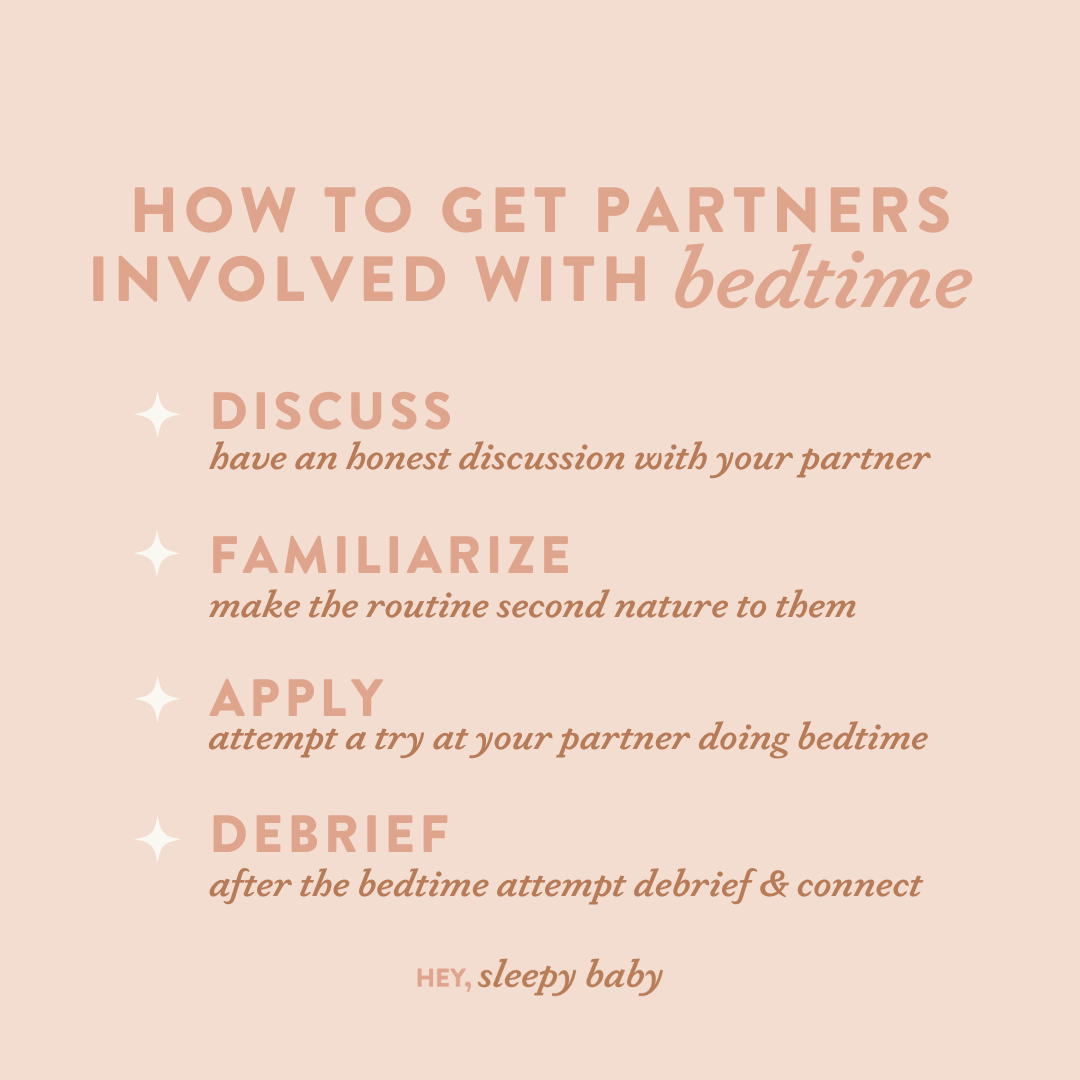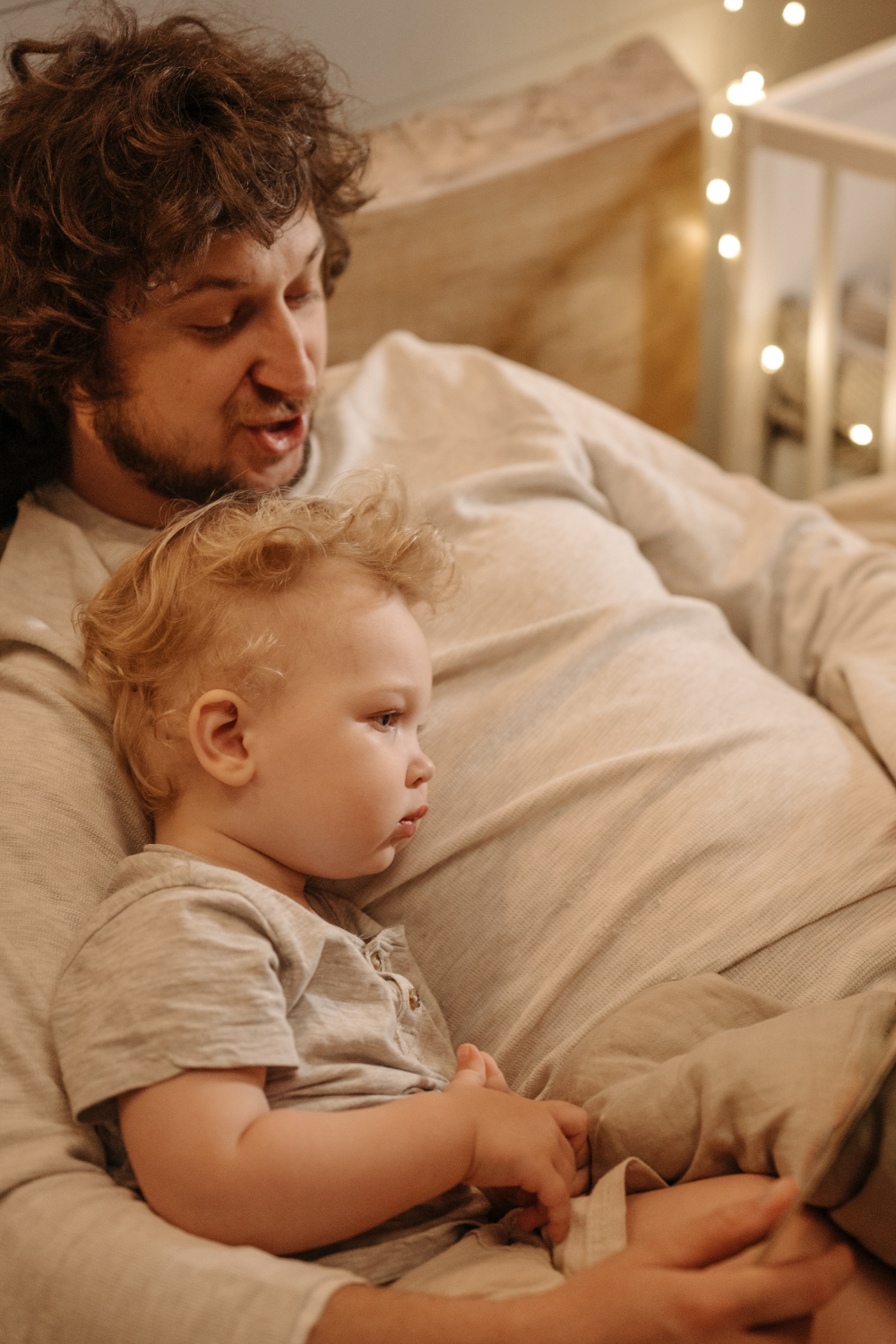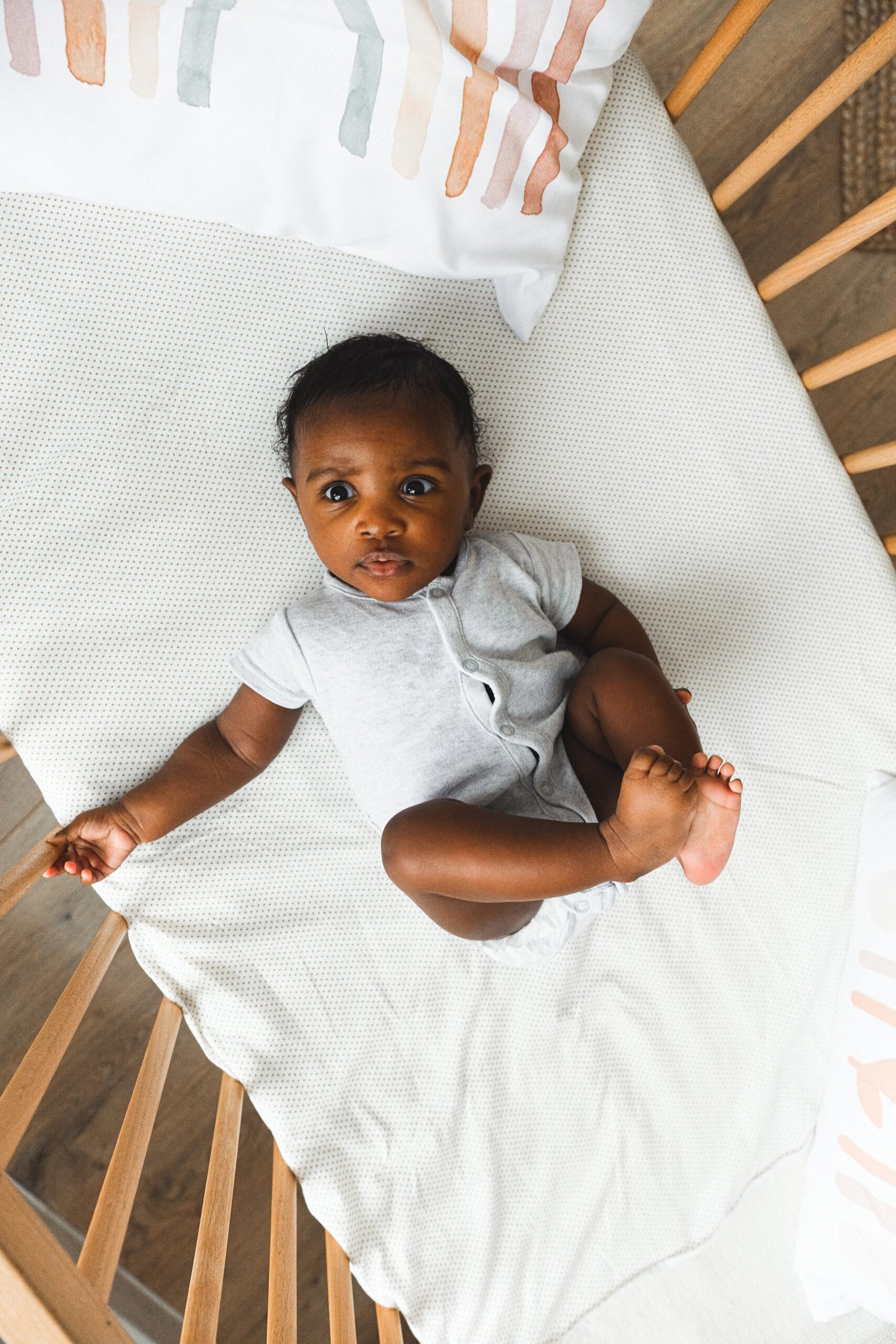One of the most frequent things I’m asked as a sleep consultant is: ‘How can I involve my partner in my baby or toddler’s sleep?’ Perhaps you want to more evenly share the load of navigating the world of baby or toddler sleep, or your baby is no longer falling asleep at the breast and you want your partner to be able to put them down for sleep, or you have a second child and you want to divide bedtimes (more specific ideas for multiple bedtimes can be found in my blog post here). Whatever your reason for wanting to help get your partner more involved, this blog has you covered!
There are four important stages in making a change to involve your partner. These are to discuss, familiarize, apply, and debrief.
discuss
The most important step to make is to have an honest discussion with your partner. It is incredibly common for resentments to build up around baby and toddler sleep. Tiredness builds up, you have less time for each other, you often end up sleeping apart or snapping at each other in the early hours. Trust me – I know – I’ve been there! I wrote about our crucial marriage-saving rule here that nothing we say in the middle of the night counts! Infant sleep can be a contentious topic and ensuring you are both on the same page and have the same expectations for any changes is crucial. I have an Instagram Post about it here. These discussions need to cover:
This might sound dramatic now, but if your baby isn’t settling or is incredibly upset, even with the loving presence of your partner, or your partner has become dysregulated, it will be much easier to navigate if you have already discussed how you will handle this prior to the heated moment. It is worth noting, though, that it is normal for partners to have different ways of responding to and helping to soothe and support their children and micromanaging their responses also isn’t helpful!
By the way, if you are experiencing parental preference, where your child strongly prefers the primary caregiver over another (completely normal), check out this blog for some practical tips! Another resource you might find helpful is my sleep training research guide to share with your partner if you are in need of resources to discuss your parental team approach to sleep and get on the same page.
familiarize
The second step is to familiarize your partner with the routine. Over-familiarize them with the routine so that they feel confident and comfortable and it feels like second nature! The routine and sleep associations your baby/toddler has are critical to this being a smooth transition. For example, if your sleep routine is bath, PJs, stories, songs, and sleep, then make sure this is kept to. More information about sleep associations and bedtime routines can be found in my new Newborn Masterclass. Rather than going completely all in on your first attempt and your partner attempting the whole routine solo, build their input up step by step. Have both of you do the routine together for a few nights so that your baby or toddler becomes used to your partner’s presence at bedtime. After a few nights of this have your partner take over one element. For example, they might do bathtime solo and then you complete the rest of the routine together. The next night they might do bathtime and PJs etc. Keep building them into the routine until you feel ready for them to attempt the whole thing. For toddlers, you can also role-play this during the daytime with their toys so that they begin to get used to the idea! The same principles can also be used for building partner familiarity for nap times and night wakings.
apply
Once everyone’s confidence and familiarity have been built up, then attempt your first try at your partner doing bedtime. Transitions are hard and falling asleep is something that can feel huge for babies and toddlers, particularly those with a sensitive temperament. You may be met with upset, resistance, and protest but your partner has the tools to be able to emotionally support your child through this. ‘I know you want mummy, I can hear how sad it’s making you. Daddy’s here and I love you’ etc.
Debrief
After the bedtime attempt make sure you debrief and connect. It’s important to support each other emotionally as well as your baby or toddler. Your partner may have had a hard time and need support or their cup filling back up. If the attempt was hard going, try and find the little positives to focus on and celebrate those. Transitions are hard and are normally messy! Making sure you keep a positive mindset and celebrate where you are will help you to stay upbeat and motivated to move through the difficulty of the change. Try not to be one and done. It can be demotivating if it hasn’t gone well and it’s easy to give up thinking that’s easier. Aim for at least one or two attempts a week to remain consistent in your change. Don’t expect the change to be plain sailing (especially for those babies/toddlers whose temperament is more sensitive and resistant to change) but keep positive and you will soon be looking back on this messy period.
how to foster a secure attachment
One of the things that will help this type of change to happen more smoothly is to focus on building strong, secure, and loving attachments between your partner and your infant. I have an Instagram post about it here if you would like some more information. Expecting your child to be able to be soothed at a vulnerable time, such as sleep and bedtime, by someone they don’t feel secure with isn’t going to happen. Your baby needs to feel safe and calm enough to fall asleep with your partner. Strong bonds need to be built up during the daytime between your partner and your child through connection, play, emotional responsiveness, and tuning in to the needs of your infant. These elements are the foundations of secure and loving attachments!
Good luck – you’ve got this!
Was this helpful? Save it for later!






